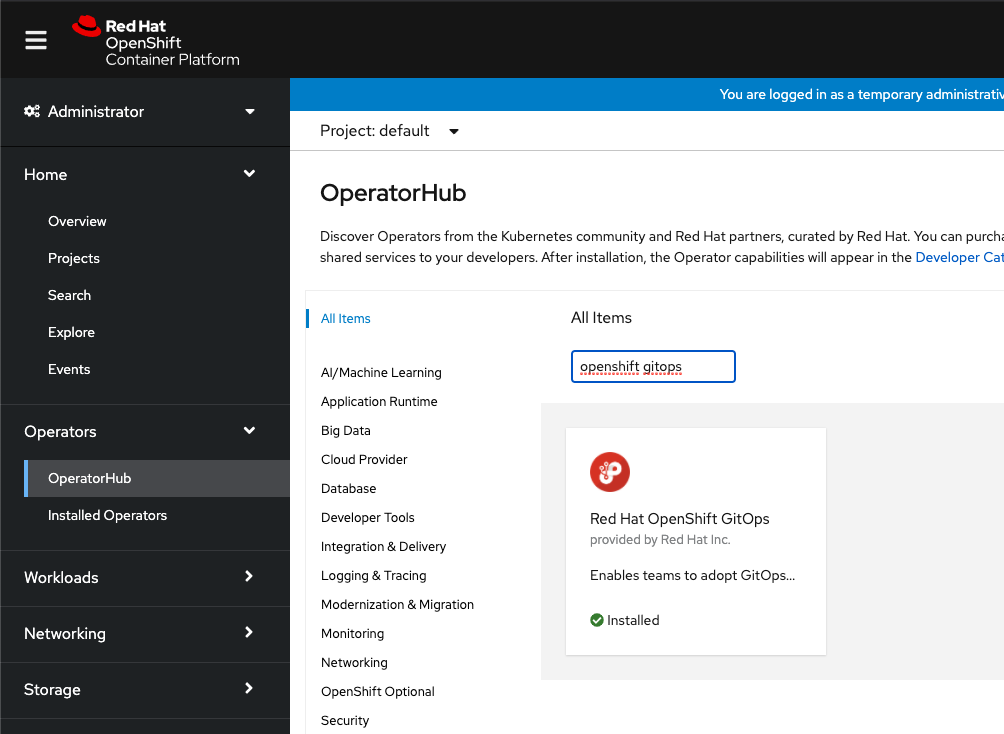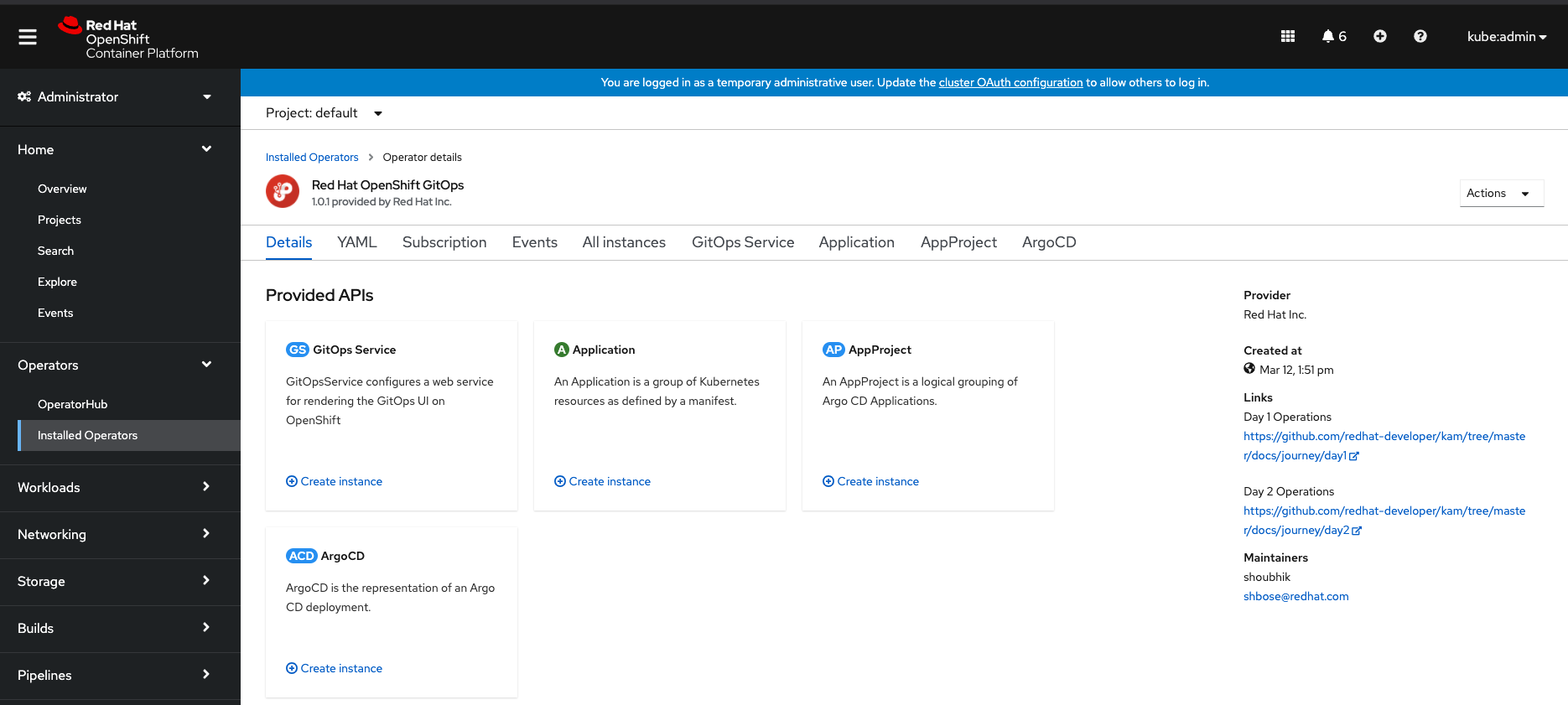An operator that gets you an Argo CD for cluster configuration out-of-the-box on OpenShift along with the UI for visualizing environments.
- Add the following resource to your cluster:
apiVersion: operators.coreos.com/v1alpha1
kind: CatalogSource
metadata:
name: gitops-service-source
namespace: openshift-marketplace
spec:
displayName: 'Gitops Service by Red Hat'
image: 'quay.io/<quay-username>/gitops-backend-operator-index:v0.0.1'
publisher: 'Red Hat Developer'
sourceType: grpc
- Go to the OperatorHub on OpenShift Webconsole and look for the "OpenShift GitOps" operator.
- Install the operator using the defaults in the wizard, and wait for it to show up in the list of "Installed Operators". If it doesn't install properly, you can check on its status in the "Installed Operators" tab in the
openshift-operatorsnamespace.
- To validate if the installation was successful, look for the route named
clusterin theopenshift-gitopsnamespace. Note: the namespace doesn't have to exist in advance, the operator creates it for you.
That's it! Your API route should be created for you. You don't need to expliclty create any operand/CR.
- Clone the repository.
- Login to a cluster on your command-line.
- Execute
make installto apply the CRDs. - Execute
make runto run the operator locally.
make test
make test-e2e
This operator currently deploys the following payload:
quay.io/<quay-username>/gitops-backend:v0.0.1
If that's all that you are changing, the following steps are not needed in development mode. You could update your image "payload" and re-install the operator.
Set the base image and version for building operator, bundle and index images.
export IMAGE=quay.io/<quay-username>/gitops-backend-operator VERSION=0.0.4
- Build and push the operator image.
make docker-build docker-push
- Build and push the Bundle image ( operator + OLM manifests )
make bundle
make bundle-build bundle-push
- Build and push the Index image
Install opm binary which is required to build index images
make opm
make catalog-build catalog-push
The Index image powers the listing of the Operator on OperatorHub.
GitOps Operator vs Argo CD Community Operator
| Features | GitOps Operator | Argo CD Community Operator |
|---|---|---|
| Default Cluster Argo CD instance | ✅ | ❌ |
| Cluster Argo CD instances in namespaces defined by envrionment variable ARGOCD_CLUSTER_CONFIG_NAMESPACES | openshift-gitops | ❌ |
| Cluster Configuration RBAC/Policy Rules | All APIGroups,Resources,get,list,watch Verbs appended with admin ClusterRoles. Additional APIGroups: operator.openshift.io,user.openshift.io, config.openshift.io, console.openshift.io, machine.openshift.io, machineconfig.openshift.io, compliance.openshift.io, rbac.authorization.k8s.io, storage.k8s.io, etc. |
All APIGroups,Resources,Verbs |
| Integrated with OpenShift Console Environments page for visualizing GitOps environments and applications | ✅ | ❌ |
| Air-gapped environments | OCP | ❌ |
| Installed tools | helm 3, kustomize | helm 2 and 3, kustomize, ksonnet |
| Single Sign-on | RHSSO, Dex | Keycloak, Dex |
| Redis Server | Redis 5, Secure connection is not yet supported | Redis 6 |
| ArgoCDExport | ❌ | ✅ |
| Installation Modes | All Namepaces | Single, All Namespaces |
| Support for Kubernetes | ❌ | ✅ |
| Maintained by | Red Hat | Community |
Migrate from Argo CD Community Operator to GitOps Operator
Please follow the steps mentioned in the doc to migrate from Argo CD Community Operator to GitOps Operator.

